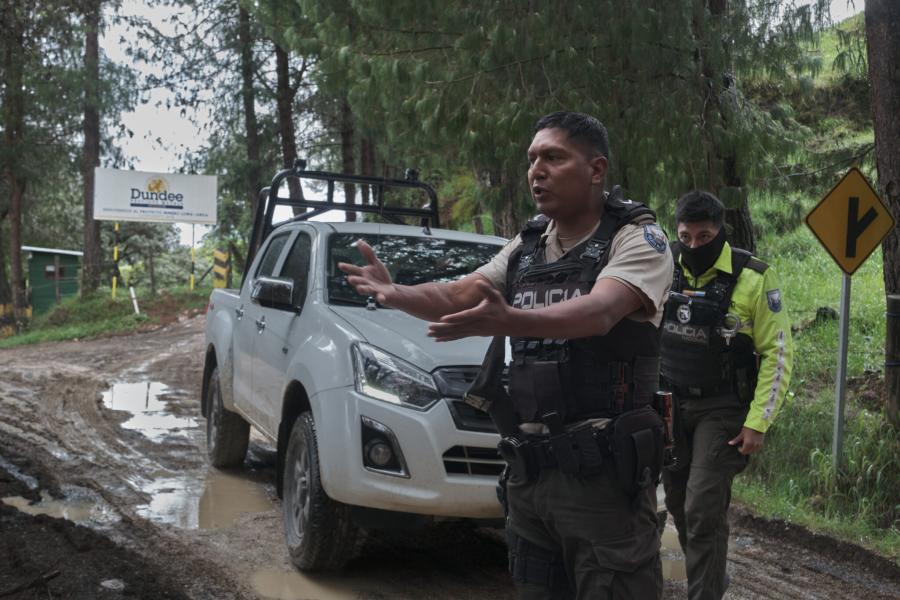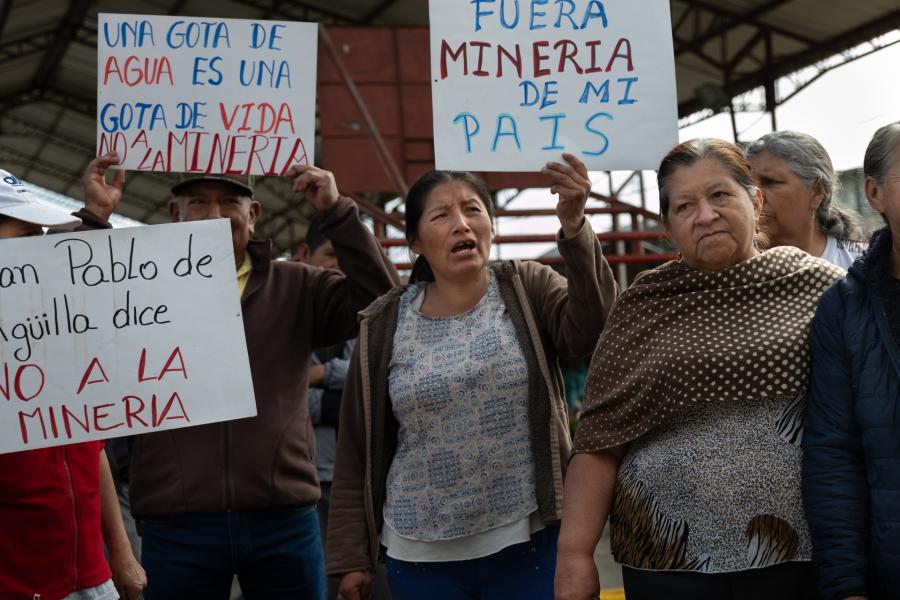For most native peoples in Canada and the United States, treaty negotiations are the stuff of history—vital history to be sure, and a cruel history of lands stolen and promises breached. For the Hul’qumi’num Mustimuhw (Hul’qumi’num peoples) of British Columbia, however, the concept of a treaty is utterly contemporary, as they are now negotiating their first one with the Canadian government. Contemporary it may be, but history seems to be repeating itself: To judge by the government’s actions, it might as well be 1865.
The Hul’qumi’num are part of a larger group of indigenous peoples of British Columbia, Canada: the Coast Salish peoples. Since time immemorial, the Coast Salish have inhabited the land and sea region of the Pacific Northwest bounded by the Columbia River in the south, Knights Inlet in the north, the city of Kamloops to the east, and the south-eastern portions of Vancouver Island. This territory is referred to as the Coast Salish world and includes the sea regions of Georgia Strait, the Strait of Juan de Fuca, and the waters of Puget Sound.
The individual Coast Salish nations, which compose the Hul’qumi’num Treaty Group (HTG) are Cowichan Tribes, Chemainus First Nation, Penelakut Tribe, Halalt First Nation, Lyackson First Nation, and Lake Cowichan First Nation (with a combined membership of 6,000 people). The HTG communities are socially, culturally, and economically interconnected by language, marriage, travel and trade, and shared sacred ceremonies and rituals. The close kinship and clan connections of these indigenous communities are sustained through centuries-old customs and traditions, such as the Winter Dance, Indian naming ceremonies, canoe races, and other sporting events.
At the cultural and spiritual heart of these cultural belief systems shared by the Hul’qumi’num Mustimuhw is the land and its rich abundance of resources. According to Hul’qumi’num Mustimuhw creation narratives, the original occupants of their traditional territory were the First Ancestors, who descended from the sky or emerged from the land or sea at various locations—places like Mt. Prevost, Koksilah Ridge, Penelakut Spit, and the mouth of the Chemainus River. The hereditary names, ceremonial rights and privileges, and Hul’qumi’num teachings that continue to be practiced today come from these First Ancestor stories. Archaeological evidence dating back more than 9,000 years shows the Hul’qumi’num peoples’ continuous occupancy and use of their traditional lands and resources. Community maps show hundreds of Hul’qumi’num place names blanketing the landscape, all demonstrating an ongoing cultural connection to local lands, waters, and resources.
The life and continuity of the Hul’qumi’num Mustimuhw are dependent upon fishing, gathering, hunting, and economic and ceremonial uses of specific sites on these lands. Moreover, the customary land tenure and subsistence patterns of the Hul’qumi’num Mustimuhw extend well beyond the existing reserve boundaries that were unilaterally imposed by the state during the 19th-century colonization period of Hul’qumi’num-Canada relations.
The ocean and the many rivers, lakes and streams that are part of the Hul’qumi’num traditional territories and resources are an essential part of the ecosystem that supports the subsistence living and cultural survival of the Hul’qumi’num Mustimuhw. Fishing for salmon, by spear and by modern techniques, not only provides nourishment to the Hul’qumi’num Mustimuhw, but also is used for economic, social, and ceremonial purposes. In addition, many Hul’qumi’num Mustimuhw members harvest clams, oysters, and other marine resources, both as a means of subsistence and for economic development purposes.
The forest resources of the indigenous peoples of the HTG are used not only for hunting and gathering of medicinal plants and traditional forest foods, but also in the traditional art forms of carving and canoe building. These activities are vitally important in perpetuating the history, culture, and traditions of the Hul’qumi’num Mustimuhw.
Between 1701 and 1930, there were approximately 70 treaties signed between the Crown and indigenous groups in what is now Canada. However, in British Columbia, where the traditional homelands of the Hul’qumi’num Mustimuhw are located, Canada had few occasions to negotiate treaties for the land rights of indigenous groups. When Vancouver Island became a British colony in 1849, the colony’s governor, James Douglas, negotiated only 14 treaties with indigenous peoples, dealing with about 3 percent of the land mass of Vancouver Island and setting aside a few reserves for some groups. Aboriginal title and land rights for the rest of B.C.’s indigenous peoples were largely ignored.
During the 1850s and early 1860s, the colonial government in Victoria invited colonists to “purchase,” through a system of pre-emption, Hul’qumi’num lands in the Cowichan and Chemainus districts. By July 1859, close to 10,000 acres of land in Hul’qumi’num territory had been “sold” to 19 colonists. There is no evidence that the Hul’qumi’num participated in this process or gave any consent to the sale of lands in their territory. On the contrary, they fought against the colonists, a conflict that eventually involved the death of colonists, cannon fire from naval gunboats, and the destruction of the Hul’qumi’num village of Lamalchi. At the urging of colonists, Governor James Douglas initially promised to purchase the rights to Hul’qumi’num land, but no payments were ever made.
In 1871, the United Colony of British Columbia joined Canada as a new province, and responsibility for indigenous peoples was transferred to the federal government under Article XIII of the Terms of Union, which, among other things, provided for a railroad to connect the new province to the rest of the country. The government of British Columbia donated a two-million-acre strip of land for the railroad, and the federal government allowed the corporation building the railroad to sell off nearly 700,000 acres of that land as payment for their work. With this transaction, the federal government essentially handed over 85 percent of the Hul’qumi’num territory. Canada did not seek or obtain a surrender of the Hul’qumi’num Mustimuhw interests in those lands prior to granting them to what became the Esquimalt & Nanaimo (E&N) Railway Co. Most of that land is now held by individuals or corporations who likely acquired the land without any knowledge that the Hul’qumi’num Mustimuhw title had never been extinguished. It may be that aboriginal title still exists in these lands, but the ability to exercise that title is seriously diminished or virtually non-existent.
The railroad deal and subsequent sales also handed over sacred sites and destroyed much of the Hul’qumi’num’s resources. Of all the forest lands in Hul’qumi’num territory, only 12 percent are currently Crown lands; 88 percent are privately held and heavily logged, leaving only 0.5 percent of the Hul’qumi’num territory as original old-growth forest. Without the private land base and access to its natural resources, the Hul’qumi’num Mustimuhw are a much poorer people. Under Canada’s Community Well-Being Index, used to examine the well-being of Canadian communities, the six Hul’qumi’num communities scored between 448th and 482nd out of 486 communities surveyed in B.C.
The Hul’qumi’num Mustimuhw have a long history of vigorously defending their aboriginal territory, property, and resources from attacks, and their struggle continues today. In December 1990, after an increasing number of indigenous peoples’ law suits, the federal and provincial governments abandoned their long-held position of refusing to recognize the existence of aboriginal title and rights and agreed to work with indigenous groups to finally negotiate a treaty.
The British Columbia Treaty Commission (BCTC) was appointed in 1993 as keeper of the treaty process. However, the BCTC is funded wholly by the government and has no power to compel the state to recognize and protect the traditional territory and rights of indigenous peoples. The Hul’qumi’num member nations have been participating in the B.C. Treaty Process for the past 11 years, spending significant time and money in developing studies and hiring the expertise needed to participate in these complex and extended negotiations. HTG’s participation in the process is being financed by loans from the state, totalling in the millions of dollars, which will be deducted from the final treaty settlement.
The idea of a treaty process should be good news for the Hul’qumi’num, but the HTG and many other indigenous peoples in Canada confront a serious human rights situation: Their very cultural survival depends upon the state fulfilling its duties under domestic and international law to negotiate in good faith, but the state has shown a significant lack of good faith.
For example, the HTG has been told repeatedly by the state that so-called “private lands” are not on the table for negotiation, and therefore return of any of these aboriginal title lands to the Hul’qumi’num Mustimuhw is not open to negotiation. Nor is there any option to discuss co-management of the land and resources or the sharing of revenue generated from those lands. Finally, the state has indicated that the treaty process is forward looking and will not be used to compensate for past wrongs. The result of these policies is that only 8 percent of the traditional territory of the Hul’qumi’num Mustimuhw is on the table for negotiation.
Another government mandate that demonstrates Canada’s failure to negotiate in good faith is its unilateral decision that compensation for the taking of HTG lands is not open for negotiation. Compensation could provide the money to buy back the Hul’qumi’num Mustimuhw’s traditional lands. The refusal of the government to discuss compensation permanently severs the intimate connections between the land, the people, their livelihood, their language, and their cultural survival and development as indigenous peoples.
The state has indicated that one of the objectives of treaty making is certainty. Certainty, they say, means that the treaty will be a full and final agreement in settlement of all Hul’qumi’num aboriginal title and rights claims to their traditional territory. For the Hul’qumi’num Mustimuhw, the state’s position would mean that their aboriginal title and rights to 92 percent of their traditional territory would be, for all intents and purposes, extinguished, in exchange for small pockets of land, largely unsuitable for residential and commercial uses. Canada also seeks to provide certainty for the state in the form of a clause in which the Hul’qumi’num Mustimuhw would indemnify the state in the event that anyone brings a legal challenge relating to the illegal taking of the E&N lands. This would effectively prohibit the Hul’qumi’num Mustimuhw from ever raising the issue in the future.
Canada’s extinguishment policies towards indigenous peoples have been criticized both internally and externally, including comments from the United Nations Committee on Economic, Social and Cultural Rights and the United Nations Human Rights Committee. Canada’s own Royal Commission on Aboriginal Peoples recognized that “Aboriginal peoples need much more territory to become economically, culturally and politically self-sufficient. If they cannot obtain a greater share of the land and resources in this country, their institutions of self-government will fail.” This is, they said, “the most pressing human rights issue facing Canadians, and failure to obtain a more global solution can only continue to tarnish Canada’s reputation and accomplishments.”
Canada has consistently reiterated its policy that any attempt by the HTG or any of its individual member nations to litigate on a treaty-related issue may result in termination or suspension of the negotiations process. Therefore, the Hul’qumi’num communities do not have real recourse to the Canadian courts to require the state to negotiate in good faith. And if the state terminated the process, the Hul’qumi’num Treaty Group would become liable for the funds loaned by the state to pay for the Hul’qumi’num’s participation in it. This places the state in a position of unfair advantage: The Hul’qumi’num Mustimuhw’s option to walk away from the negotiation is greatly compromised by the possibility of a huge debt becoming due and payable. At the same time, since the state is not incurring a similar debt load, there is no real incentive for it to engage in good faith negotiations.
The Hul’qumi’num Treaty Group has made good faith efforts to resolve its grievances through the treaty negotiation process, but those efforts have consistently failed. HTG, along with many other First Nations involved in the B.C. treaty process, believe that a third party observer or mediator, such as the UN Special Rapporteur on the Situation of Human Rights and Fundamental Freedoms of Indigenous People, could make a significant contribution. The Special Rapporteur’s experience and expertise could be drawn upon to make recommendations to reform the B.C. Treaty Process, which could lead to a “best practices” model for state-sponsored legislation to protect indigenous peoples’ human rights.
Robert Morales is the Chair of the Chief Negotiators of the First Nations Summit based in British Columbia, Canada, and the Chief Negotiator for the Hul’qumi’num Treaty Group.



